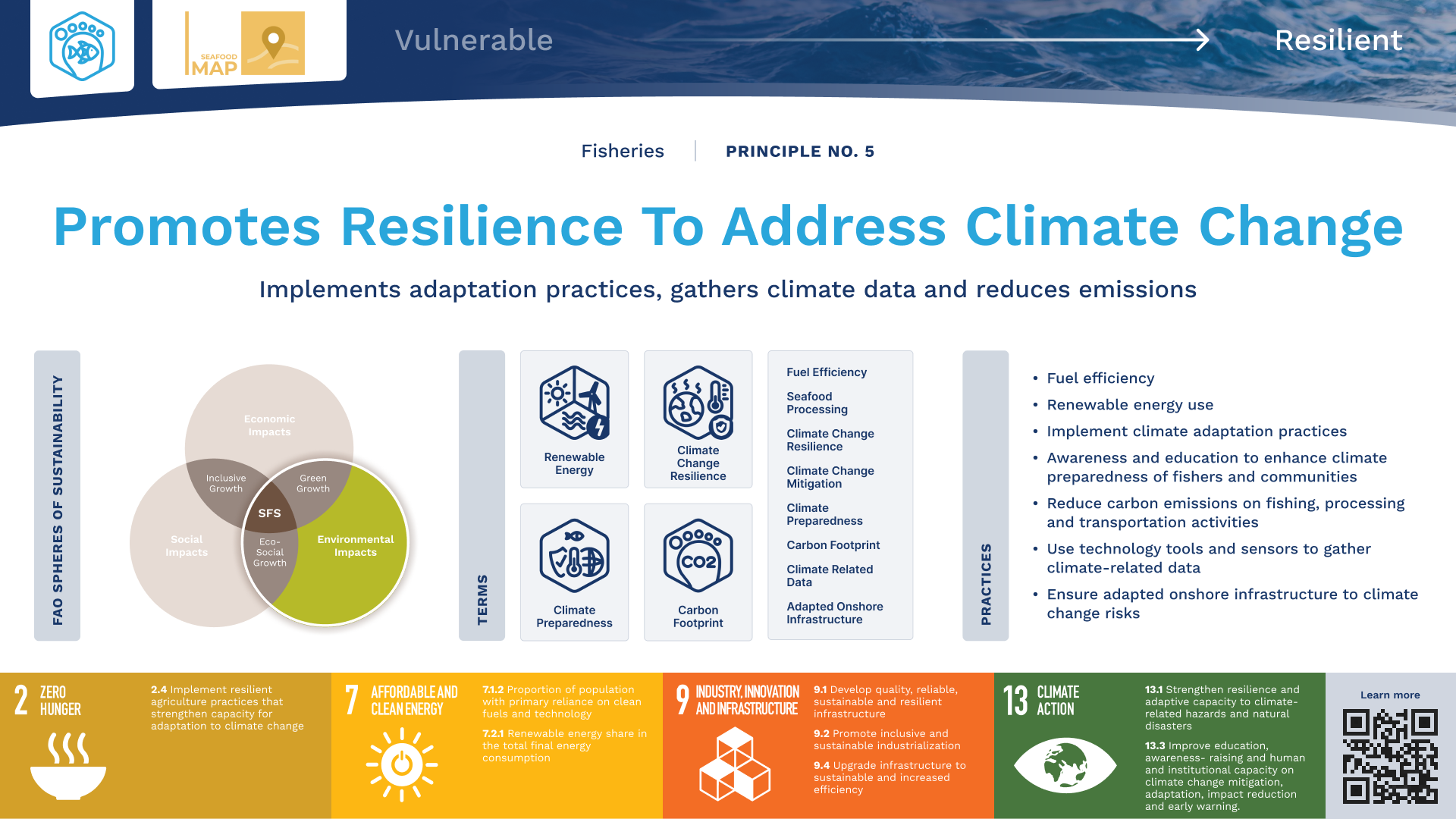Fisheries – Principle 5 | Seafood MAP

Environmental Defense Fund
Key Topics Explained
What is the connection between fisheries and climate change?
Fisheries emit relatively small amounts of greenhouse gases (GHGs) that cause climate change, compared with animal husbandry on land. However, certain types of fishing are carbon-intensive. Their carbon footprint could be reduced by switching to lower-carbon fuels and by optimizing travel speeds. Fisheries can also sometimes disrupt bottom sediments that store carbon, causing some of it to re-enter the atmosphere and contribute to climate change.
Fisheries and the seafood you choose to eat can be part of the solution. Species that are lower in the ocean’s food chain like sardines, anchovies, and shellfish have particularly small carbon footprints and eating them directly is a very efficient way to use ocean resources. These species are also rich in healthy micronutrients like zinc, calcium, and omega 3 fatty acids.
Fish probably play an important role in the ocean’s “biological pump” which draws down carbon dioxide from the atmosphere and sequesters it in the deep ocean. First the carbon dioxide is taken up by phytoplankton at the surface, some of which sink into deep water where the carbon can be stored for centuries. This process is accelerated when the phytoplankton are eaten by zooplankton, whose bodies and fecal pellets sink and carry more carbon to deep waters. Fish may be accelerating this pump even more by eating the zooplankton, resulting in larger fecal pellets that sink even faster; the bodies of some fish may also reach deep water after death, resulting in more carbon sequestration. Thus, sustainably managed fisheries that support larger populations of fish in the water might result in increased carbon sequestration. Moreover, many fishers play important roles in protecting ecosystems like mangrove forests, salt marshes, and seagrass meadows, which are sequestering carbon while also supporting biodiversity, livelihoods, and the resilience of coastal communities to climate change.

N/A
N/A